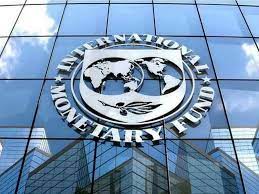
The International Monetary Fund (IMF) is warning that emerging markets face a multitude of risks stemming from high external borrowing costs, stubbornly high inflation, volatile commodity markets and heightened uncertainty about the global economic outlook.
According to its 2022 Global Financial Stability Report, so far, investors have continued to differentiate across emerging market economies unlike in previous crisis episodes, many of the largest emerging markets seem to be more resilient to external vulnerabilities and classic balance of payments shocks.
The Report said “Many frontier markets, however, are facing potential loss of market access and a high probability of sovereign default, and more than half of all low-income countries are judged by the IMF to be already in, or to have a high probability of entering, debt distress.”
“In addition, there is a growing risk that authorities in advanced economies will respond to concerns about supply chain vulnerabilities by adopting more inward-looking policies. A disorderly restructuring of global supply chains—involving higher trade barriers and increased uncertainty about trade policy—would undermine a key engine of growth for emerging markets, amplify macroeconomic and capital flow volatility, and reduce emerging markets’ access to international capital markets”, it stressed.
The report further said local currency bond markets have seen large net portfolio outflows from non-resident investors this year, reflecting continuing pessimism about the outlook for emerging market sovereign bonds.
“Despite a modest rebound in August, sentiment appeared to deteriorate again in September. Equity flows are down moderately for 2022 on net, with India in particular”, it said.
The report also said challenges facing frontier markets were driven by a combination of tightening financial conditions, deteriorating fundamentals, and high exposure to commodity price volatility.
The median debt-to-GDP ratio for frontier markets has nearly doubled since 2010, although it is expected to decline somewhat in 2022.
Interest expenses on government debt have also continued to rise, increasing immediate liquidity pressures and potentially negative policy consequences, such as crowding out of public investment.
It, therefore, said credible medium-term fiscal consolidation plans were paramount to easing domestic refinancing costs and restoring international market.
‘While this has further weakened the macroeconomic outlook for importers, many frontier markets are commodity exporters and have benefited from higher prices. Conversely, the rise in global food prices is adding to vulnerabilities in frontier markets by increasing the policy trade-offs: higher inflation calls for tighter monetary policy, but supporting the most vulnerable would require additional fiscal space or expenditure reprioritisation,” said.
BY TIMES REPORTER





